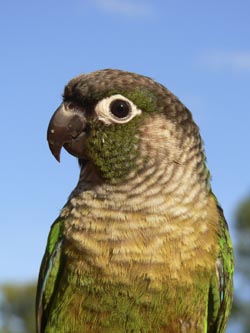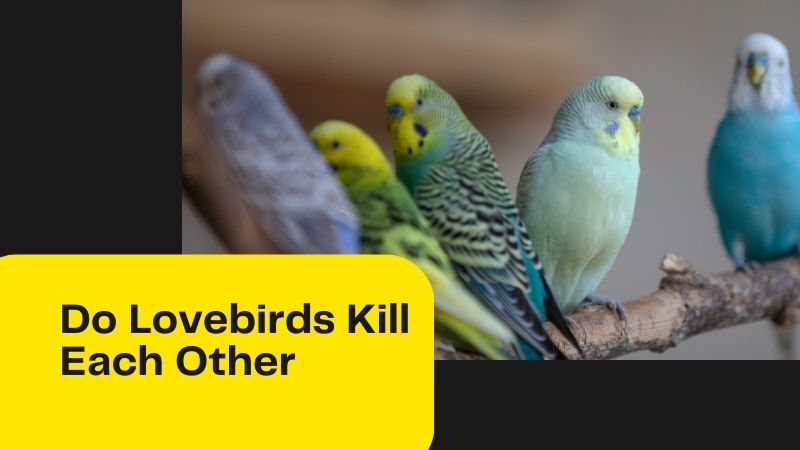Male and female Green Cheek Conures exhibit subtle differences, chiefly in behavior and size. Females tend to be slightly larger and less vocal, while males may exhibit more playful antics and singing.
The Green Cheek Conure parrot is a vibrant, active bird, coveted by bird enthusiasts for its striking features and dynamic personality. With a life expectancy of up to 30 years, these small parrots, native to South America, form strong bonds with their owners.
Distinguishing between male and female Green Cheek Conures can be a challenge without a DNA test or surgical sexing, as they are monomorphic—visually identical in feather coloration and pattern. Engaging and intelligent, both sexes can mimic human speech and require ample mental stimulation.
Their size, typically around 10 inches from beak to tail, makes them a favorite among those living in smaller spaces. Understanding the nuances between male and female conures aids pet owners in providing the best care and environment for their feathered companions.
Physical Characteristics
When it comes to the vibrant world of Green Cheek Conures, differentiating between males and females may seem challenging at first glance. However, upon closer inspection, some key physical characteristics help to identify the gender of these charming birds.
From the subtle nuances in plumage coloration to size variations and even distinct behavioral patterns, let’s explore the fascinating differences between male and female Green Cheek Conures.
Plumage Coloration Differences
Green Cheek Conures are adorned with a rainbow of feathers that make them a favorite amongst avian enthusiasts. One of the most striking differences in their appearance can be the variation in plumage between males and females.
Although generally subtle and sometimes requiring genetic testing to confirm, some enthusiasts report males having slightly brighter and more pronounced plumage compared to their female counterparts.
- Males may exhibit more vibrant hues along their cheeks and chest.
- Females are often said to have a more muted color palette across their feathers.
Size Variations
Size is another aspect where male and female Green Cheek Conures might differ. Typically, males tend to be slightly larger than females, though this size difference is often negligible without precise measurement. The table below summarizes these variations explicitly:
| Gender | Size (Length) | Weight |
|---|---|---|
| Male | Approximately 26 cm | Averages between 60 to 80 grams |
| Female | Approximately 24 cm | Averages between 55 to 75 grams |
Behavioral Distinctions
Behavior can also be a telling sign of a Green Cheek Conure’s gender. Even though individual personality plays a significant role, certain tendencies are commonly observed. Males are often more territorial and may exhibit behaviors such as beak tapping or wing flapping to assert dominance.
In contrast, females might display nesting behaviors, like shredding paper or arranging their cage bedding in a specific manner. Here’s a quick list of some of these distinctions:
- Males
- More prone to displaying dominance
- Maybe more vocal in asserting territory
- Females
- May show signs of nesting behavior
- Potentially less aggressive than their male counterparts

Credit: m.youtube.com
Vocalizations And Communication
When exploring the world of parrots, particularly the charming Green Cheek Conures, understanding their vocalizations and communication strategies is both fascinating and essential for potential bird owners.
These vibrant feathered friends have unique ways of expressing themselves. Whether you have a male or female Green Cheek Conure, their sounds and interactions can tell you a lot about their mood, needs, and bonding with you and other birds.
Comparison Of Vocalizations
Green Cheek Conures are known for their distinct vocal abilities. Although both males and females are capable of an array of sounds, there are subtle differences that can be observed:
- Males often have a louder and more insistent call, especially during mating season.
- Females might produce softer chirps and less frequent calls.
Certain vocalizations are more common based on gender due to hormonal influences and behavioral instincts. For example, a male might be more prone to vocalize territorially, while a female’s communication could be more focused on interaction with her mate or chicks.
Communication Patterns
Green Cheek Conures use an intricate mix of vocalizations and body language to communicate:
| Vocalization | Male Pattern | Female Pattern |
|---|---|---|
| Chatter | More frequent and varied to attract attention or assert dominance | Occasional and consistent, often as a response or call to her mate |
| Whistling | May use elaborate whistles to woo partners and express joy | Whistles can be short and sweet, signaling contentment or a need |
| Squawking | Louder squawks during confrontations or to display authority | The Milder version is often related to protective instincts or discomfort |
It’s important to recognize these communication cues to understand your conure’s well-being and respond appropriately to their needs.
Social Interactions
The social dynamics between male and female Green Cheek Conures are as unique as their vocalizations:
- Males might be more dominant in flock settings or paired interactions.
- Females tend to be nurturing, especially within a pair bond or when raising chicks.
- Mixed-gender pairs often show a complementary relationship where vocalizations become synchronized and reciprocal.
Observing social interactions in different contexts can reveal collective patterns in vocal behavior, highlighting the complexity and depth of Green Cheek Conure communication.

Reproductive Behaviors
Understanding the reproductive behaviors of Green Cheek Conures is fascinating, especially when distinguishing between male and female roles.
These vibrant parrots, beloved for their playful personalities and chatter, exhibit unique behaviors during their breeding cycle. Recognizing these habits not only enhances the breeding success for owners and breeders but also ensures the well-being of these birds in captivity.
Nesting Behaviors
Green Cheek Conures prepare for offspring by selecting and customizing their nest. Males often take the lead in finding a suitable nesting site. They exhibit protective behaviors, such as guarding the nest entrance from potential intruders.
Females follow by meticulously arranging the interior, using available materials to create a comfortable and secure nest for egg-laying. They prefer cozy, enclosed spaces, signaling their readiness to mate. These behaviors can be more pronounced in captivity where the caretaker provides choices for nesting.
Egg-laying And Incubation
- Egg-Laying: Female Green Cheek Conures lay between 4-6 eggs per clutch, usually producing eggs every other day.
- Incubation: Once the clutch is complete, the female spends the majority of her time incubating the eggs, which includes maintaining the temperature and turning the eggs to ensure even development. The incubation period typically lasts about 22-25 days.
During this crucial period, male Green Cheek Conures become even more vigilant, often feeding the female as she incubates and maintaining a close watch over the nesting site.
Parental Roles And Responsibilities
Once the eggs hatch, both male and female Green Cheek Conures rise to their parental duties. The division of labor is quite pronounced, with each parent performing specific roles:
| Parent | Responsibilities |
|---|---|
| Female | Feeding the chicks Keeping them warm Cleaning the nest |
| Male | Foraging for food Defending the nest Feeding the female and, in turn, the chicks |
The male’s role extends to providing for and protecting the family, while the female concentrates on direct care, ensuring the young receive the nourishment and warmth needed for early development. This teamwork ensures a high survival rate, preparing the young conures for an independent life beyond the nest.
Health And Lifespan
When considering Green Cheek Conures, potential pet owners often evaluate the charming personality traits and the health and longevity of these colorful parrots. A key aspect to consider is the differences in health and lifespan between male and female Green Cheek Conures.
Through understanding gender-specific health considerations, the average lifespan comparison, and employing effective care and management tips, owners can provide the best environment for their feathered friends to thrive.
Gender-specific Health Considerations
Although Green Cheek Conures are relatively hearty birds, certain health aspects are notably different between males and females. For instance, females may face unique reproductive issues such as egg binding or chronic egg laying, which can lead to significant health complications.
On the other hand, males could exhibit territorial aggression that, while not a direct health issue, may lead to stress and related health problems if not properly managed.
Average Lifespan Comparison
Green Cheek Conures have a reputation for being among the parrots with a longer lifespan. Typically, these birds can live up to 20-30 years in captivity with proper care. However, there are no significant studies that differentiate the lifespan between male and female conures conclusively.
Factors like genetics, diet, environment, and preventative veterinary care play a more pivotal role in their overall lifespan than gender does.
Care And Management Tips
- Ensure a balanced diet that includes high-quality pellets, fresh fruits, vegetables, and occasional seeds or nuts.
- Provide regular veterinary check-ups to catch and treat any potential health issues early.
- Maintain a clean and safe environment: a spacious cage, regular cleaning, and providing toys to reduce stress and boredom.
- Understand the signs of stress and illness, such as feather plucking or changes in eating habits.
- Incorporate regular exercise and social interaction into their daily routine. Conures are social creatures that need human interaction and the opportunity to fly and explore.
Implementing these care tips is key, as stress and poor management are factors that can significantly impact the health and longevity of both male and female Green Cheek Conures. Keeping these vibrant companions happy and healthy is a commitment to their vibrant life full of companionship.
Frequently Asked Questions
How Can You Tell The Difference Between A Male And Female Green Cheek Conure?
To distinguish between male and female green cheek conures, observe their size and behavior. Males are usually larger and more territorial, while females may have a smaller build and exhibit less dominance. DNA testing offers a definitive identification method.
Are Female Conures Nicer Than Males?
Conure temperament varies by individual rather than gender; both male and female conures can be equally friendly. Socialization and handling often influence their niceness.
Are Male Green Cheek Conures Cuddly?
Yes, male green cheek conures can be cuddly. They often enjoy close contact and affection from their owners.
What Is The Personality Of A Male Green Cheek Conure?
Male green cheek conures typically exhibit playful, affectionate, and sociable personalities. They’re known for their intelligence and can develop strong bonds with their owners.
Conclusion
Distinguishing between male and female Green Cheek Conures is subtle, yet meaningful. The key lies in behavior patterns, physical characteristics, and potential bonding dynamics. Whether you opt for the playful antics of a male or the nurturing nature of a female, both promise companionship and vibrant personality.
Embrace the nuances and enjoy the colorful journey with your feathered friend.

I am a writer and blogger who is passionate about birds. I write to inspire and educate others about the beauty and importance of avian species in our ecosystem. I love to watch birds flying and taking their photographs to capture those memories.

